Key takeaways
- New media regulations are designed to create a fair environment for broadcasters while prioritizing audience protection and content creator accountability.
- Implementing compliance measures led to improved content quality and audience trust, encouraging a more thoughtful approach to broadcasting.
- Technical adjustments, such as automated logging and updated equipment, contributed to legal protection and enhanced broadcast capabilities.
- Training staff through hands-on experiences and open discussions fostered teamwork and made compliance a shared mission rather than an isolated task.
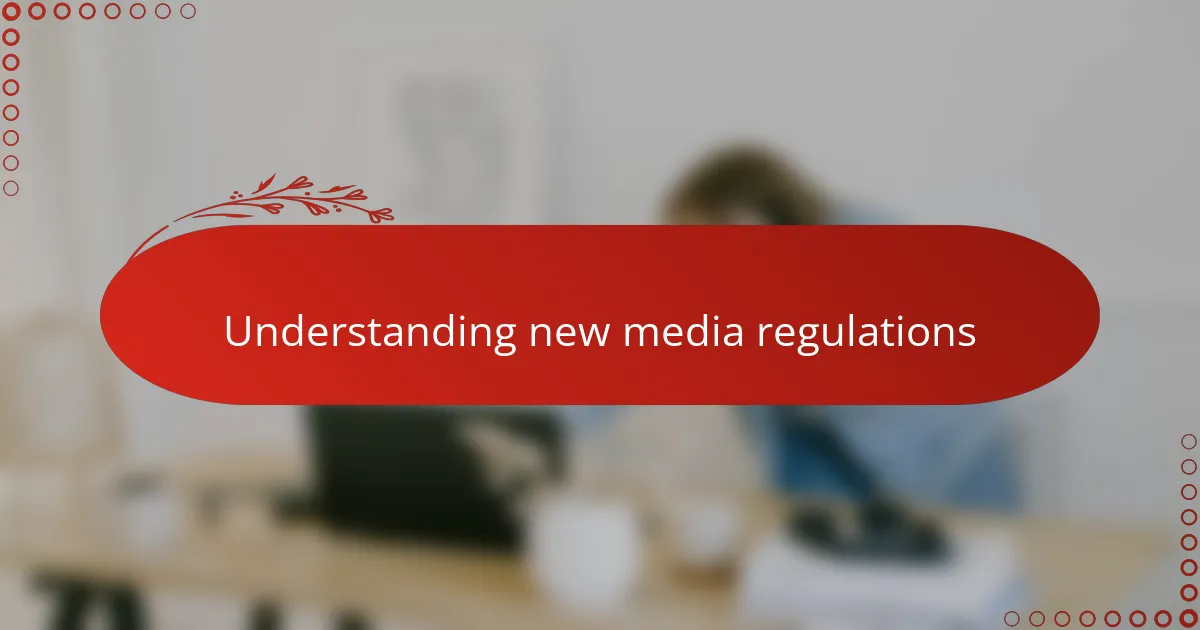
Understanding new media regulations
When I first encountered the new media regulations, I felt a mix of confusion and apprehension. I kept asking myself, “How will these rules impact the way I broadcast?” Slowly, I realized that understanding the specifics was less about restriction and more about evolving responsibly.
Diving into the details, I found that these regulations aimed to create a fair and transparent environment for all broadcasters. It wasn’t just legal jargon; it was a framework designed to protect both the audience and content creators. This shift made me appreciate how much care goes into balancing creativity with accountability.
Reflecting on my experience, I found that truly grasping the intent behind these regulations helped me adapt more confidently. Instead of resisting the change, I began viewing it as an opportunity to improve my workflow and strengthen my connection with listeners. Isn’t it interesting how understanding often turns fear into motivation?
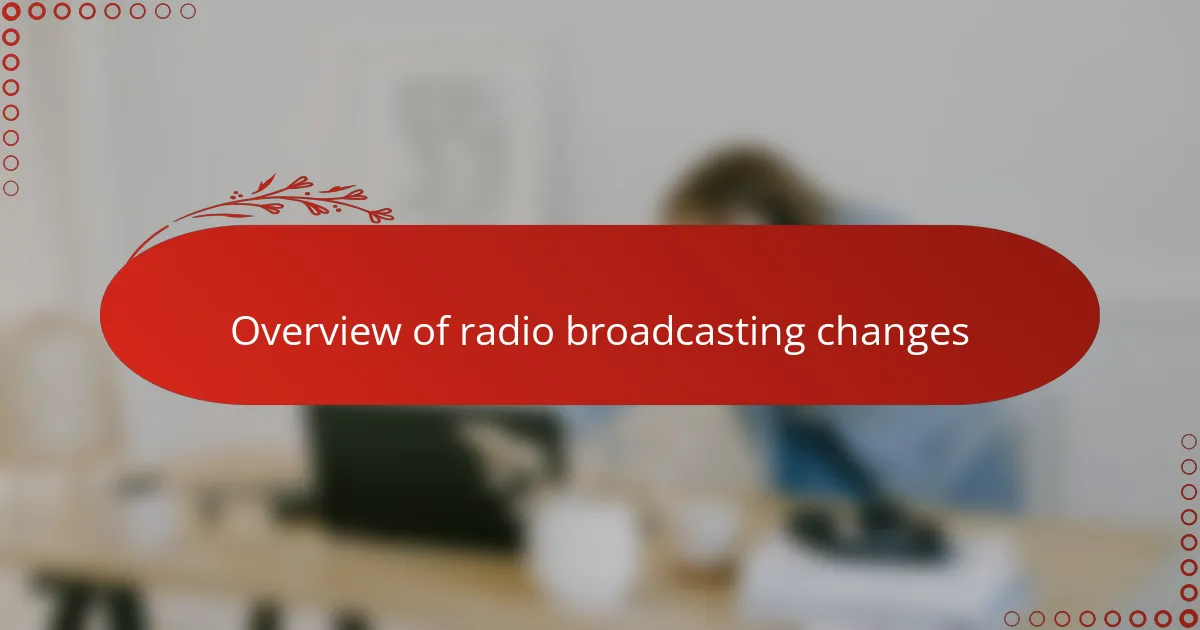
Overview of radio broadcasting changes
Radio broadcasting has undergone some noticeable shifts due to these new regulations. At first, the changes felt overwhelming—things like stricter content guidelines and increased documentation seemed like hurdles. But I soon saw how these updates are shaping a clearer structure for what we put on air.
One of the biggest adjustments I noticed was the push for more transparency and accountability. It made me rethink how I present information and interact with my audience. Have you ever paused mid-broadcast, wondering if you’re hitting the right note with both creativity and compliance? That’s exactly where I found myself.
In the end, these changes nudged me to be more deliberate with my content choices. It wasn’t just about following rules; it became about building trust with listeners in a new way. Adapting wasn’t easy, but it felt rewarding to see my broadcasts become more polished and meaningful.

Key compliance requirements for radio
Navigating the key compliance requirements for radio felt like decoding a new language at first. I quickly learned that strict adherence to content standards, like avoiding prohibited material and ensuring balanced reporting, was non-negotiable. Have you ever felt that weight of responsibility when you realize every word counts on air? That moment hit me hard, but it also sharpened my focus.
One requirement that stood out was the emphasis on proper licensing and copyright clearance. Initially, I underestimated the impact of this until a minor slip-up almost caused a serious issue. That experience taught me to treat these legalities not as burdens but as shields protecting my work and integrity.
Another crucial rule involved maintaining clear records and transparency about sponsorships and advertisements. This wasn’t just about ticking boxes—it forced me to rethink how I build honest relationships with my audience. Isn’t it refreshing to broadcast with such openness? It certainly deepened my commitment to earn listeners’ trust every day.
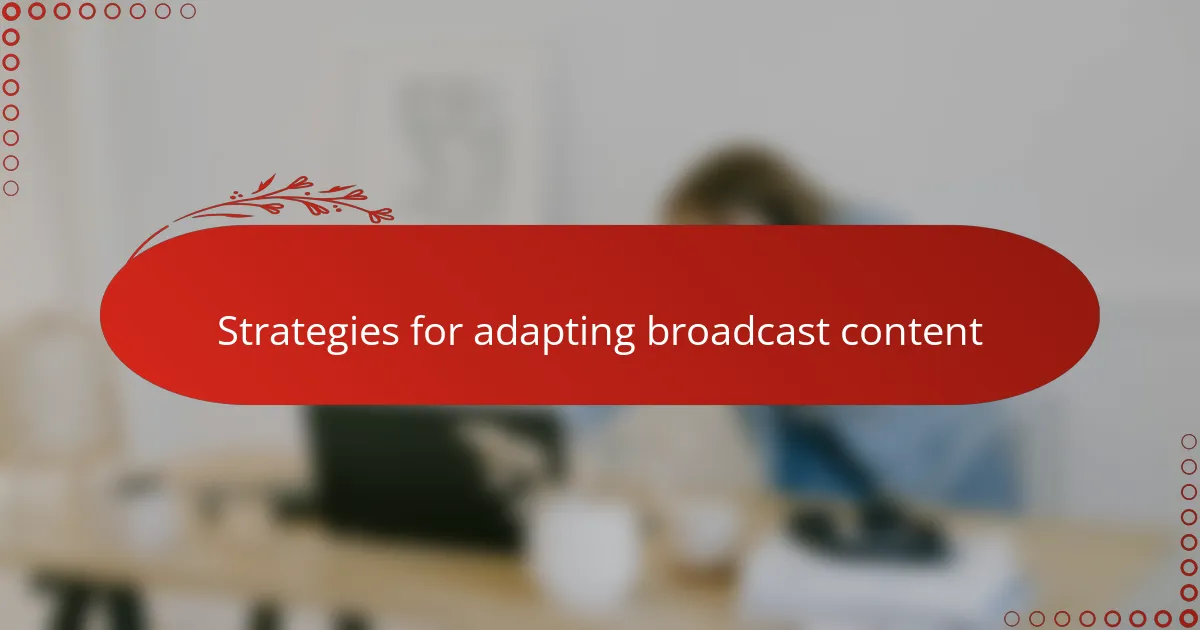
Strategies for adapting broadcast content
Adjusting my broadcast content meant embracing a more thoughtful approach to what I aired. I started asking myself, “Does this segment comply with the new guidelines without sacrificing creativity?” Finding that balance was tricky but rewarding—it pushed me to be more selective and purposeful with every word and sound.
One strategy I found invaluable was regularly reviewing scripts and playlists through the lens of the regulations before going live. It felt like having a safety net, reducing the anxiety of accidental slips. Have you ever felt that calming confidence when your preparation aligns perfectly with the rules? That feeling made me realize preparation was empowerment.
I also experimented with diversifying content formats to stay engaging while ensuring compliance. For instance, moving from spontaneous chats to well-researched interviews created a space for richer, responsible discussions. This shift not only aligned with requirements but deepened my connection with listeners, reminding me that rules don’t have to limit creativity—they can inspire it.

Implementing technical adjustments
Implementing the necessary technical adjustments felt like stepping into a new world of equipment and software updates. I recall the moment I had to overhaul my broadcasting console to meet the digital archiving standards—it was daunting at first, but once I got the hang of it, the whole process felt like upgrading my station’s capabilities rather than just ticking compliance boxes. Have you ever experienced that blend of frustration and excitement when learning a new tool that’s ultimately meant to make your work smoother?
One crucial change involved integrating automated logging systems to ensure real-time documentation of on-air content. Initially, it felt intrusive, like inviting technology to police my creative flow. However, I came to appreciate how this adjustment not only protected me legally but also provided valuable insights into my broadcasts that I could use to improve listener engagement over time.
Adjusting transmission parameters was another hurdle—shifting frequencies and tweaking signal outputs demanded precision and patience. I remember spending sleepless nights troubleshooting, questioning if I’d interrupted my loyal audience’s experience. Looking back, those technical trials taught me resilience and made me realize just how vital these tweaks are for maintaining both compliance and broadcast quality.
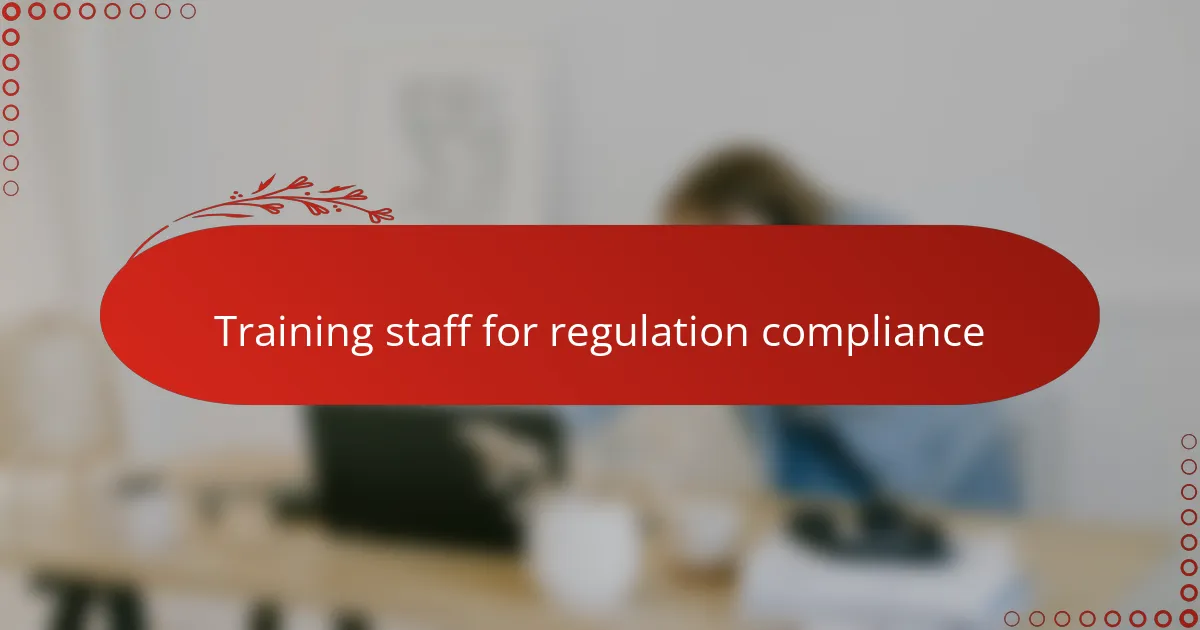
Training staff for regulation compliance
Training my team for regulation compliance was one of the most eye-opening parts of adapting to the new rules. At first, I worried they might see it as just another box to tick, but I discovered that hands-on workshops and real-life scenarios helped bring the regulations to life. Have you ever noticed how people learn best when they actually experience something instead of just reading about it? That approach made a huge difference for us.
I also made it a point to encourage open conversations about challenges and uncertainties. When a staff member voiced confusion over content guidelines, we tackled it together instead of sweeping it under the rug. Those moments built trust and made compliance feel like a shared mission, not a solo burden. Honestly, seeing the team grow more confident gave me a real sense of relief and pride.
To keep things fresh, I introduced quick refresher sessions and bite-sized updates whenever rules evolved. It might seem tedious, but breaking the information into manageable pieces prevented overwhelm. From my experience, continuous and clear communication is the key to turning compliance from a chore into a natural part of daily broadcasting. Don’t you find that small, consistent steps often lead to the biggest progress?
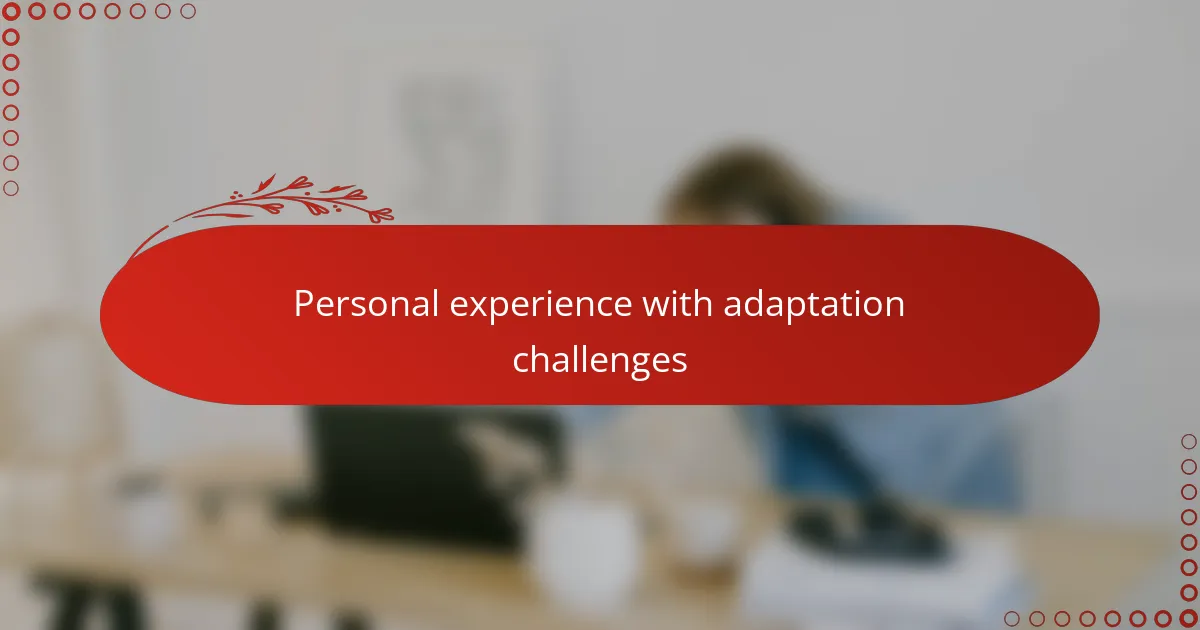
Personal experience with adaptation challenges
Adapting to the new regulations wasn’t a smooth ride for me. I remember the frustration of juggling the pressure to comply with rules while trying to keep my broadcasts authentic and engaging. Have you ever felt torn between following guidelines and maintaining your creative voice? That inner conflict really tested my patience and resilience.
One particular challenge was retraining myself to think like a regulator during live shows—a skill I never imagined needing. It felt like constantly walking a tightrope, balancing spontaneity with caution. But over time, this mindset shift became second nature, turning what once was a source of stress into a tool for sharper content control.
Sometimes, I caught myself slipping back into old habits, and it was humbling to realize how deeply ingrained some practices were. These moments of self-awareness pushed me to be more mindful and proactive. Isn’t it curious how setbacks often lead to the most meaningful growth? For me, those challenges ultimately strengthened both my professionalism and passion for radio.
